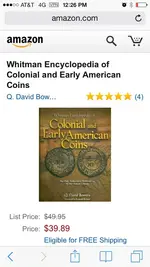joeyfresh
Bronze Member
- Joined
- Dec 19, 2006
- Messages
- 2,283
- Reaction score
- 1,399
- Golden Thread
- 2
- Location
- Colonial Virginia
- 🥇 Banner finds
- 2
- Detector(s) used
- XP Deus
Teknetics T2
- Primary Interest:
- All Treasure Hunting
Met up with Bill D. again this morning. Our intentions were to check out some spots we had done a little research on including a couple of early 1700 sites... then we were going to return to the site where Bill found his Charles II farthing last week and try to eek out a few more oldies. We gained permission at one of the allegedly ca. 1700 sites and after a half hour of swinging we started to hit iron and dig brick. We anticipated finding more but the site didn't yield much but a few buttons so we decided to hit the fall-back site from last week. After chit-chatting with the nice homeowner our first goal was to try to find my lost cut pistareen from last week but sadly, after a much appreciated effort from Bill, the spanish silver is still lost...possibly forever  .
.
My first two targets were a nice early drilled-shank button back (I'm assuming it was inlaid with bone at one point) and a spoon handle. I then dug the customary lead balls, tacks and buckle pieces. After roaming around I got a really high tone (93 on my T2 vdi) and dug up a cruddy and worn looking copper which turned out, after a very delicately cleaning, to be a 1670's Charles II half penny. My next good target was this flattened Confederate Block I button which is the second confederate button I found in this area within a few weeks. Finding any Civil War buttons in that area is somewhat strange because there wasn't any Civil War activity there other than a small skirmish miles down the road. These were probably lost by the home owners after the War.
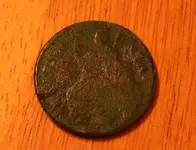
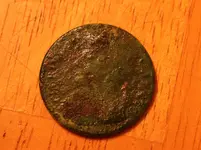
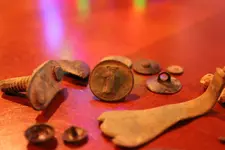
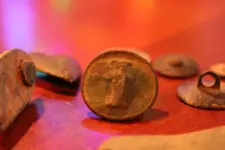
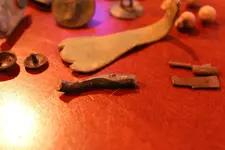
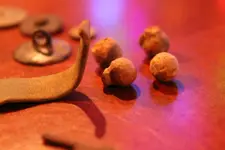
 .
.My first two targets were a nice early drilled-shank button back (I'm assuming it was inlaid with bone at one point) and a spoon handle. I then dug the customary lead balls, tacks and buckle pieces. After roaming around I got a really high tone (93 on my T2 vdi) and dug up a cruddy and worn looking copper which turned out, after a very delicately cleaning, to be a 1670's Charles II half penny. My next good target was this flattened Confederate Block I button which is the second confederate button I found in this area within a few weeks. Finding any Civil War buttons in that area is somewhat strange because there wasn't any Civil War activity there other than a small skirmish miles down the road. These were probably lost by the home owners after the War.






Amazon Forum Fav 👍
Upvote
9




